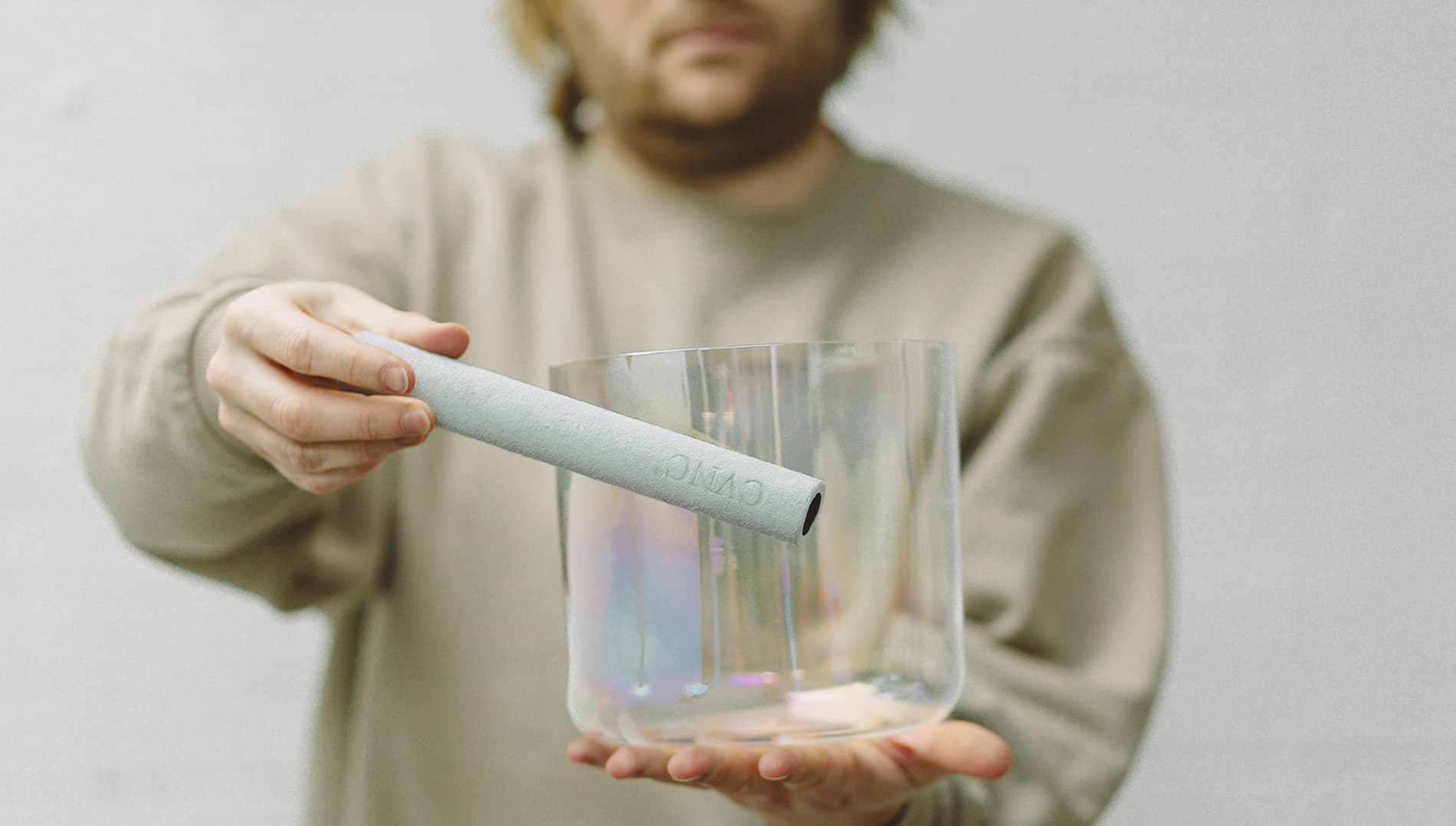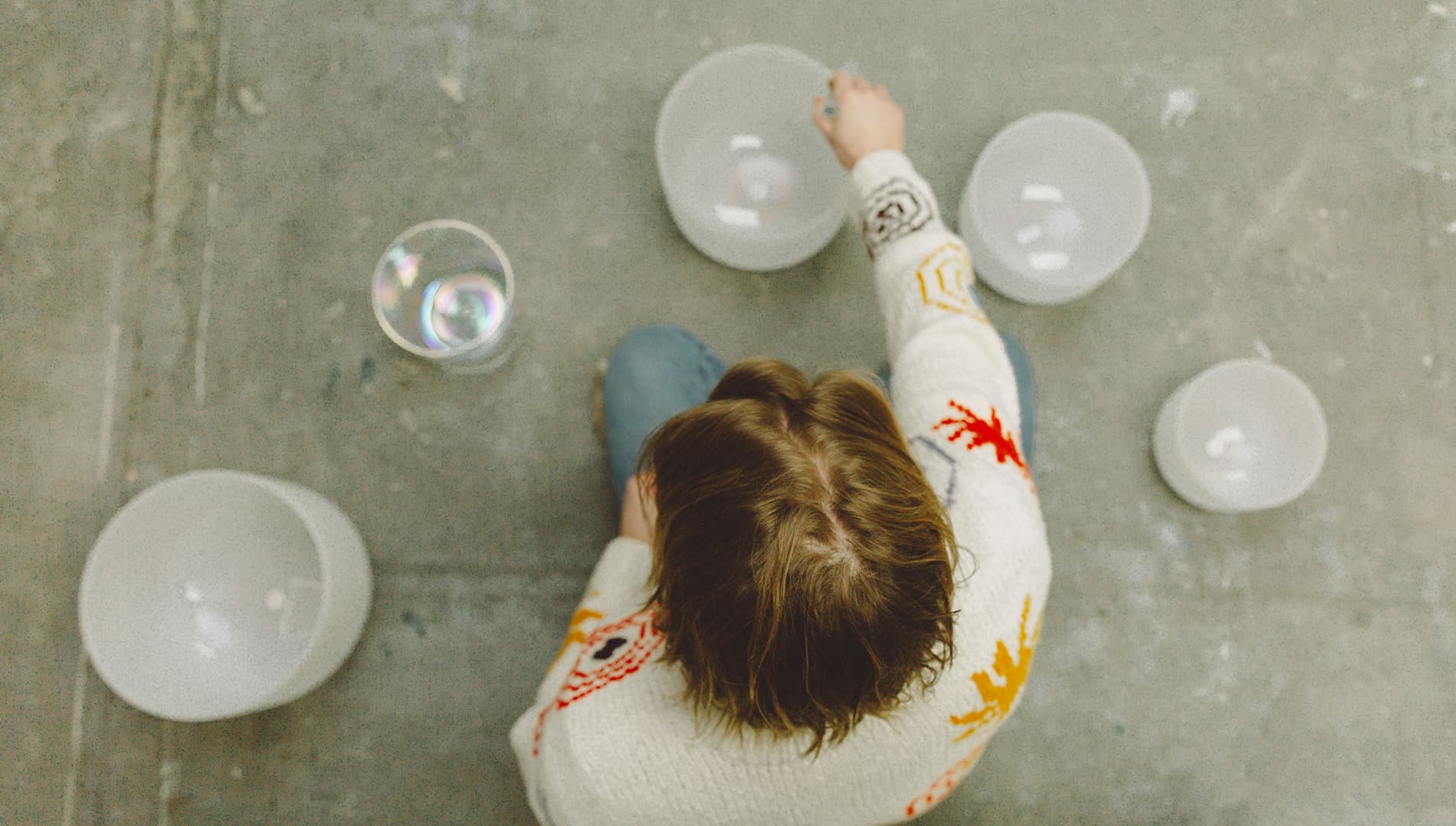

A sound bath is a deeply immersive experience that uses a range of instruments to envelop you in soothing sounds.
They’re often described as being intensely relaxing as the frequencies emitted by the instruments guide the brain into a similar state to when we meditate. In fact, sound baths are often recommended for those who struggle with the focus needed for meditation as you just need to listen and allow the sounds to transport you.
Many people feel as though they have had an excellent night’s sleep. However, they’re also a great opportunity to de-stress, and disconnect from the world around you and your daily life, carving out space for you to focus on yourself.
Every sound bath is unique as there is no formal musical structure, there is no score or sheet music and none of the conventions of musical composition around rhythm and melody. This less structured format aids the relaxation process as the brain isn’t picking out patterns and repetition, or anticipating the next bridge, chorus or key change.
A typical sound bath will incorporate several instruments intended to have a different impact. My sound baths generally involve both crystal singing bowls and himalayan singing bowls, koshi chimes and occasionally a drum. Others will incorporate rain sticks, gongs, kalimbas and many other instruments to create a peaceful environment to feel grounded and centred.
Frequently Asked Questions
What happens at a sound bath?
Usually, we’ll begin with a brief explanation of what to expect in the session and an explanation of the instruments that will be used. Following that, you’ll make yourself comfortable on your yoga mat with any pillows and blankets you’ve brought and you’ll be given a moment to silently set your own intention for the session. We’ll then do a short breathing exercise to begin to relax and feel grounded before I start playing.
During this time, I might move around the space, playing over and around you to deepen the experience. All you need to do is lay down and listen as I move through the instruments.
At the end, I’ll prompt you to open your eyes and sit up when you feel ready. It can be good to take some deep breaths and do some gentle stretches just to get you moving again, have some water and maybe make some notes about the experience if you’ve brought a notepad.
What will I experience?
Although many people find sound baths relaxing, they can also be quite intense. Different people respond to sounds in different ways and the instruments are designed to do different things. A gong or drum has a very different impact to the sound of a high note crystal bowl, for example.
People often have a preference for one instrument over another – some people love the deep resonance of having a drum played over them, whereas others find it too intense.
A sound bath can also be structured through the choice of instruments, the order they’re played and the notes used to be more invigorating. Low, deep sounds are often found to be grounding and relaxing, whereas higher notes are often less so.
Will it help me sleep?
The short answer is yes, probably.
The long answer is…
Sound baths work by adjusting the frequency of our brain waves through sympathetic resonance. When we’re awake brain waves travel at 13-30Hz these are known as beta waves. When we’re relaxed or sleepy, the frequency slows to 8-13Hz (alpha waves) and when we’re in light sleep, also known as REM sleep the frequency slows further to 4-8 Hz (theta waves). When we’re in deep, dreamless sleep, the frequency slows to 0-4Hz (delta waves).
When we meditate, we’re aiming to get our brains to those alpha and theta states. Sound baths support this through sympathetic resonance. This is the principle that one vibrating object causes another to vibrate in harmony with it or match its rate of vibration. Using this principle, a sound bath aims to guide your brain to the alpha and theta states through the sound vibrations of the instruments.
Interestingly, this means that you don’t actually need to hear the sound of the instruments for a sound bath to be effective, it’s actually the sound waves or vibrations that are having an impact on your body.
Are sound baths suitable for everyone?
Sound baths are suitable for most people to attend, however there are some circumstances where caution is advised:
Pregnancy: Sound baths are not suitable during the first three months of pregnancy. After this point it is usually fine to attend, but please do let me know before the start of the session.
Metal implants and pacemakers: Sound baths may not be safe for people with metal implants, such as pins, plates, or pacemakers, because the vibrations could interfere with the device.
Severe mental illness: Sound baths can be intense experiences that may bring up unpleasant feelings, so people with severe mental health disorders should consult with a healthcare provider before attending.
Epilepsy: Some rare forms of epilepsy can be triggered by sound, and certain frequencies or patterns of sound vibrations may trigger seizures in susceptible individuals. Please consult with a healthcare provider before attending.
Meniere’s disease: Please consult with a healthcare provider before attending.
Ear infections: Certain frequencies can cause pain if you are suffering from an ear infection.
This list is not exhaustive and you are recommended to speak to a healthcare professional if you have any concerns about attending a sound bath with a pre-existing condition.
What do I need to bring?
The bare minimum is a yoga mat – I often find the thick, foam mats that you probably wouldn’t want to use regularly for yoga practice are better for a sound bath. They’re soft, the fact they don’t have much grip doesn’t matter and you can pick them up quite cheaply. But don't worry if you don't have one, I'm happy to lend you one of my spares.
Beyond that, many people like to bring a pillow and a blanket and some bring eye masks.
Water is always a good shout as many people, including me, feel very thirsty after a sound bath and some people also like to bring a notepad or sketch pad so they can capture their thoughts afterwards.
